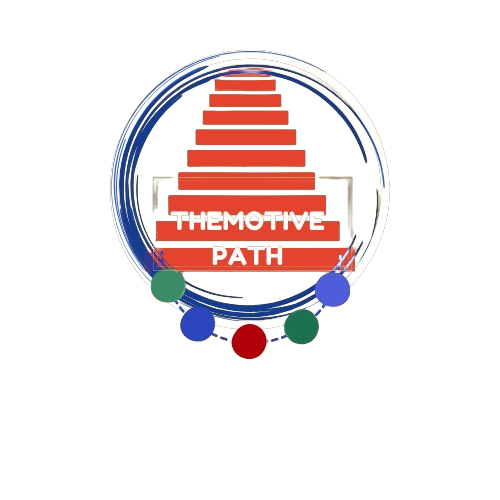MOTIVE PATH
It sounds like you’re interested in learning about creating a “motive path” for a blog. A motive path is essentially the journey or path that you want your readers to take when they visit your blog, from their initial point of entry to the desired action you want them to take, whether it’s signing up for a newsletter, purchasing a product, or engaging with your content in some other way. Here’s how you can create a motive path for your blog:
- Define Your Goals: Start by clarifying what you want to achieve with your blog. Is it to generate leads, increase brand awareness, drive sales, or something else? Your motive path should align with these goals.
- Understand Your Audience: Know who your target audience is, what they’re interested in, and what motivates them. This understanding will help you tailor your content and the path you want them to take.
- Plan Content: Develop a content strategy that guides your audience through the motive path. This might include blog posts, videos, infographics, or other types of content that appeal to your audience and lead them towards your goal.
- Create Compelling Entry Points: Your blog posts should serve as entry points to your motive path. These posts should be engaging, informative, and relevant to your audience’s interests. Use headlines, visuals, and meta descriptions to entice readers to click through to your content.
- Internal Linking: Within your blog posts, strategically link to other relevant posts or pages on your site. This helps guide readers through your content and keeps them engaged with your site for longer.
- Call-to-Action (CTA): Include clear and compelling calls-to-action within your blog posts that encourage readers to take the next step in your motive path. Whether it’s signing up for a newsletter, downloading a resource, or making a purchase, your CTAs should be persuasive and aligned with your goals.
- Optimize Conversion Points: Identify key conversion points in your motive path, such as a sign-up form or a product page, and optimize them for conversion. This might involve A/B testing different designs, copy, or offers to see what resonates best with your audience.
- Track and Analyze: Use analytics tools to track the performance of your motive path and identify areas for improvement. Pay attention to metrics like page views, time on page, click-through rates, and conversion rates to gauge the effectiveness of your strategy.
- Iterate and Improve: Based on your analytics data and feedback from your audience, continuously refine and optimize your motive path to better meet your goals and serve your audience’s needs.Call-to-Action (CTA): Include clear and compelling calls-to-action within your blog posts that encourage readers to take the next step in your motive path. Whether it’s signing up for a newsletter, downloading a resource, or making a purchase, your CTAs should be persuasive and aligned with your goals.
- Optimize Conversion Points: Identify key conversion points in your motive path, such as a sign-up form or a product page, and optimize them for conversion. This might involve A/B testing different designs, copy, or offers to see what resonates best with your audience.
- Track and Analyze: Use analytics tools to track the performance of your motive path and identify areas for improvement. Pay attention to metrics like page views, time on page, click-through rates, and conversion rates to gauge the effectiveness of your strategy.Iterate and Improve: Based on your analytics data and feedback from your audience, continuously refine and optimize your motive path to better meet your goals and serve your audience’s needs.
-
Organic Growth: Focus on creating high-quality, valuable content that naturally attracts readers through search engines, social media shares, and word of mouth. This approach relies on the strength of your content to draw in readers and engage them, ultimately leading them to take desired actions.
- Paid Promotion: Invest in advertising and promotional campaigns to drive traffic to your blog. This could involve using platforms like Google Ads, Facebook Ads, or sponsored content on relevant websites to reach a larger audience quickly. Paid promotion can be effective for quickly increasing visibility and attracting readers who may not have found your blog through organic channels.
- Community Engagement: Build a community around your blog by actively participating in relevant online forums, social media groups, and industry events. Engaging with your audience and participating in conversations related to your niche can help you establish credibility, foster relationships, and drive traffic to your blog through referrals and word of mouth.
- Collaborations and Partnerships: Partner with other bloggers, influencers, or brands in your niche to cross-promote each other’s content and reach new audiences. Collaborative efforts such as guest blogging, co-hosting webinars, or joint giveaways can help you tap into each other’s networks and expand your reach more effectively than going it alone.
- Email Marketing: Build an email list of subscribers who are interested in your content and regularly send them updates, newsletters, and exclusive offers. Email marketing allows you to stay connected with your audience, drive repeat traffic to your blog, and nurture relationships that can lead to conversions over time.

- Search Engine Optimization (SEO): Optimize your blog for search engines to improve its visibility and attract organic traffic. This involves optimizing your content with relevant keywords, improving site speed and user experience, earning backlinks from reputable websites, and other strategies to help your blog rank higher in search engine results pages.
- Content Syndication: Syndicate your blog content on other platforms and websites to reach a broader audience. This could include republishing articles on Medium, submitting guest posts to other blogs, or sharing content through content aggregation sites. By expanding the reach of your content beyond your own blog, you can attract new readers and drive traffic back to your site.
- Influencer Marketing: Partner with influencers in your niche who have a large and engaged following to promote your blog and reach their audience. Influencer marketing can be particularly effective for reaching highly targeted segments of your target audience and driving traffic to your blog through endorsements and recommendations from trusted sources.

